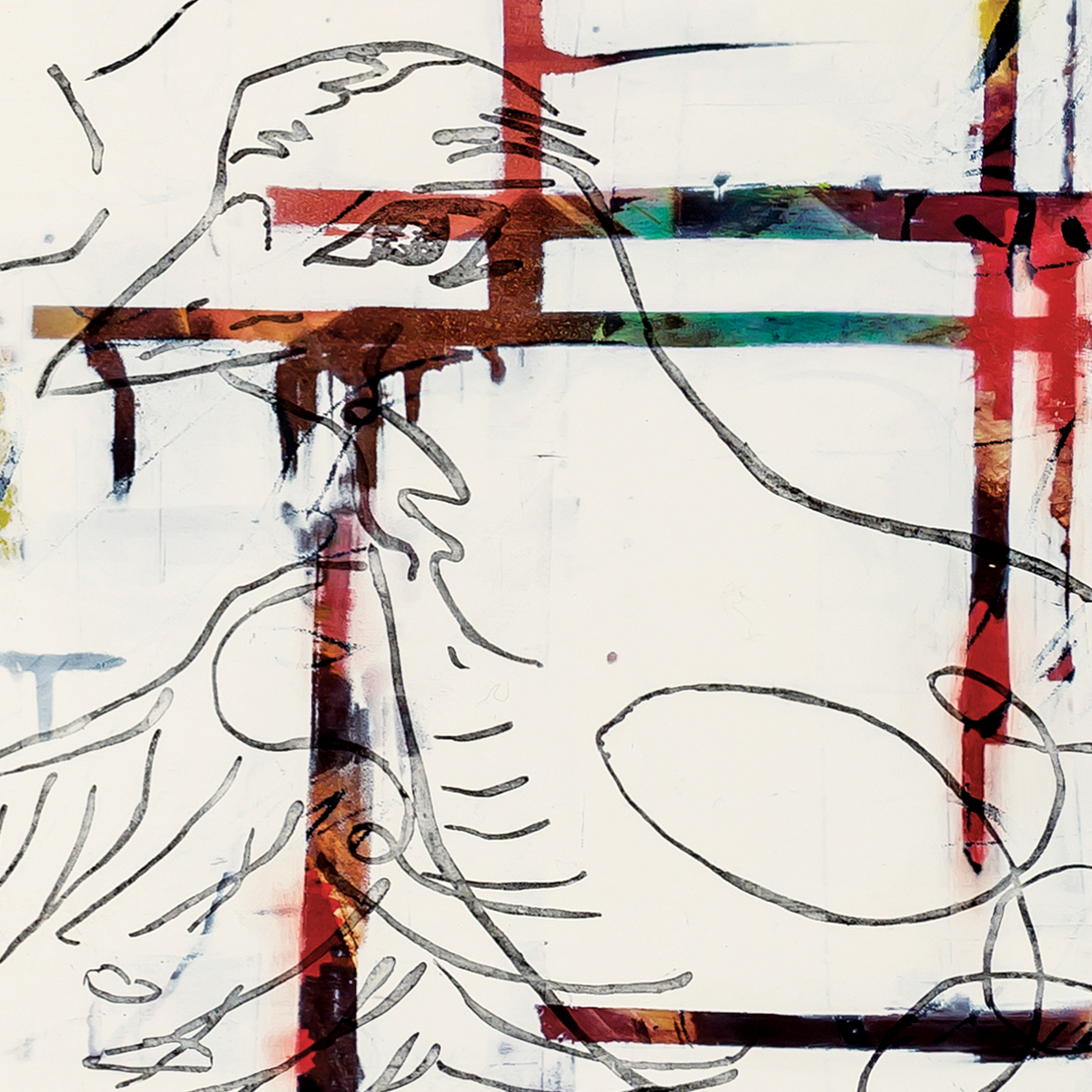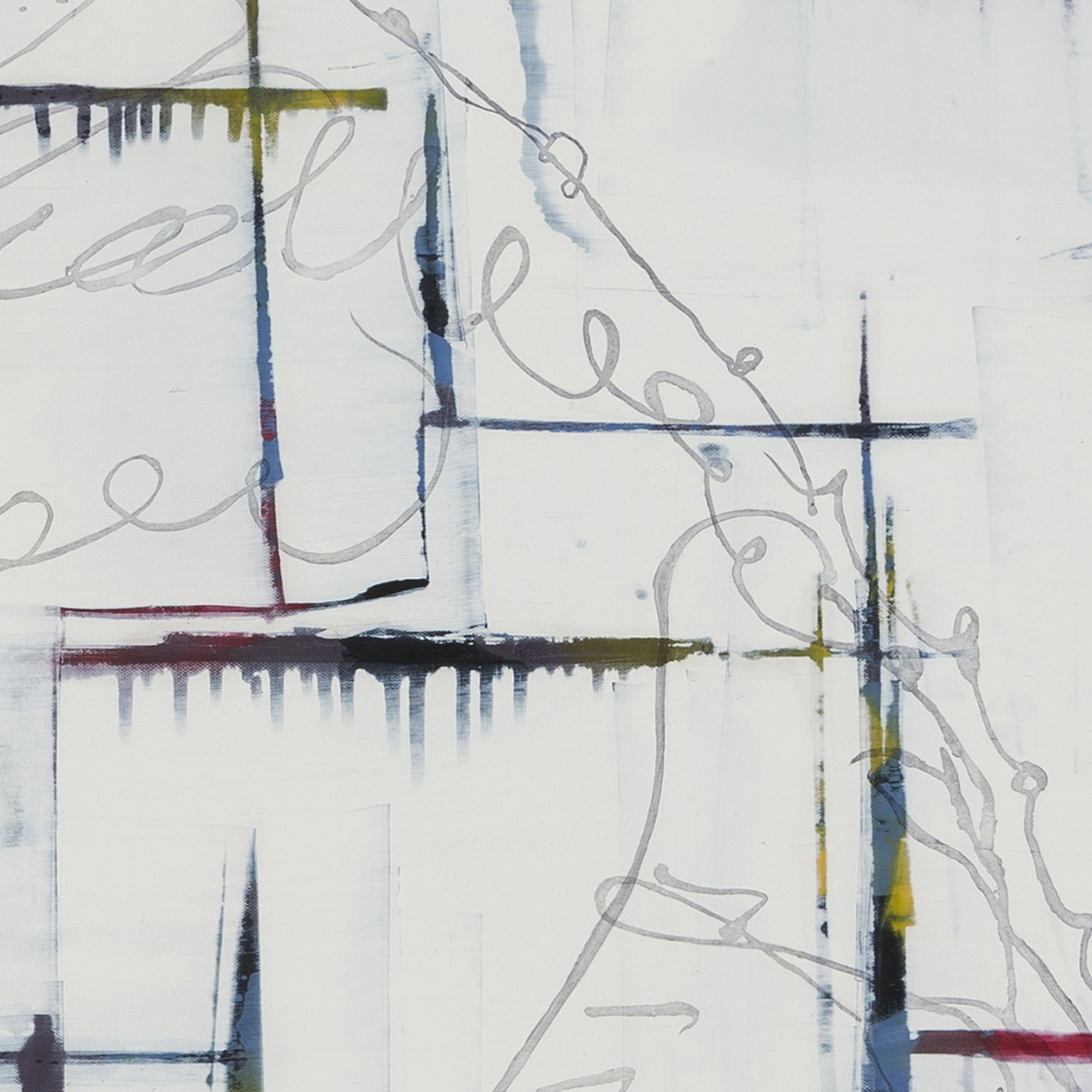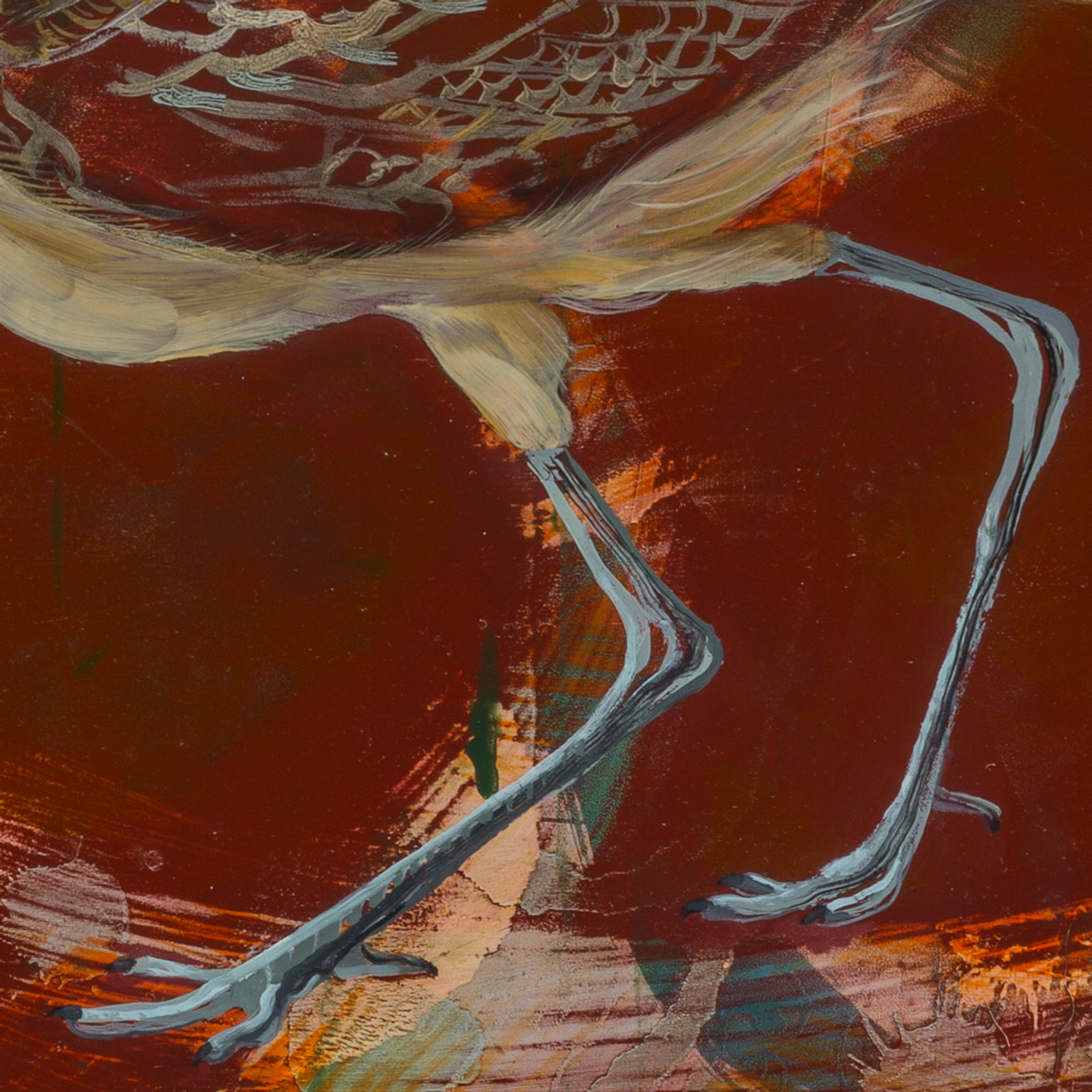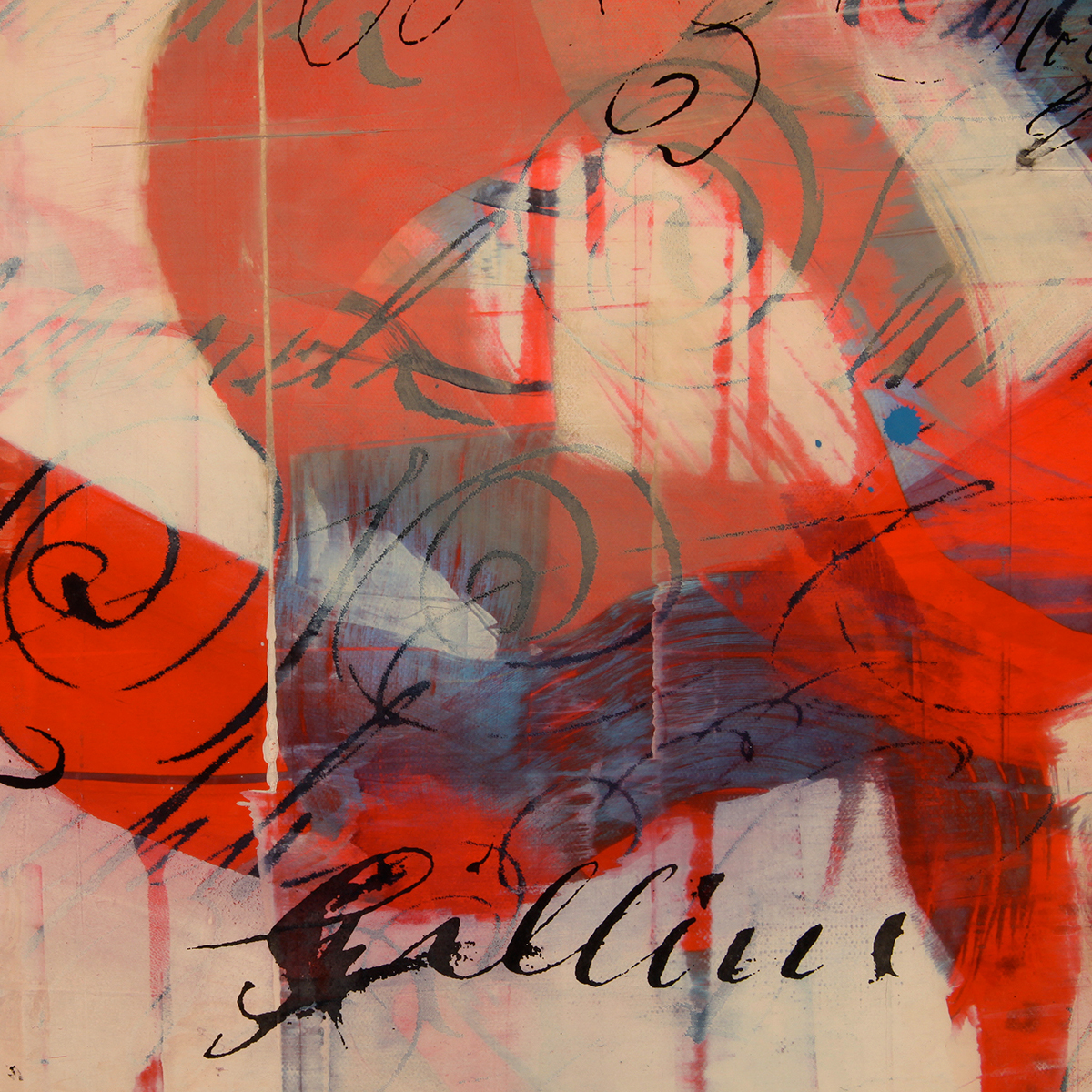detail, Edgeland of the Sora Rail
detail, Circumnavigate
detail, Specimens (with Long-Billed Curlew)
statement
Redrawn Topographies: Human and Wild Imprints on the Land
In recent paintings, with their map-like, aerial views, I continue my development of an abstract language to communicate the dissonance between nature and human development. Inspired by living in the Yellowstone Greater Ecosystem, I contemplate the primordial force of migrating animals and their challenges. Subdivisions, street grids, agricultural fields, wind turbines, highways, fences, power lines, and other manmade interventions—expressed through the rectilinear patterning in the paintings—are increasingly disrupting the ancient routes of wild movement.
The vibrant colors and intricate details of the geometric bands in my work evoke the nuanced complexity of human development and culture over time. From ancient indigenous footpaths to superhighways, the human imprint recalls an often blood-soaked history, but brings obvious societal benefits in the modern age. In this series of paintings, many of the underlayers are composed of silkscreened facsimiles of 19th-century handwritten text (from archives at the Montana Historical Society). These letterforms symbolize language and culture, and bits of black text peek through to the surface. On the uppermost layers, curvilinear gestures reference the migratory movement of animals such as elk, pronghorn, bison, and mule deer. This seasonal phenomenon is driven by the search for forage, and is critical to wildlife abundance. Wild migrations alter the landscape in many interconnected ways, increasing flora and fauna numbers and diversity.
In Redrawn Topographies, contrasting systems of markmaking intersect randomly, at times conflicting with each other. While creating these works, I envision how human development and natural forces might coexist in harmonious ecosystems. By restoring and maintaining habitat connectivity (for example, via conservation easements, roadway crossings, and fence modifications), I have hope that the visual patterns on the land might long continue to reveal a thriving, rhythmic flow of wildlife.
Approaches to Imagery and Abstraction
Source materials for my work, some embedded beneath layers, are wide ranging, from the gestures of penmanship, to pen-and-ink drawings of birds, to avian migration patterns, to maps of the earth’s magnetic field, to aerial landscape views, and to scores of artists who have come before me.
My Development
Many years ago, I came across some handwritten correspondence that changed the way I look at the world. The manuscript archives of libraries and historical societies are where I’ve pored through linear feet of boxes of family papers, bank ledgers, business journals from the 19th century. Looking at one particular handwritten letter, I was suddenly awestruck by how a single penstroke can conjure an era so keenly. Can the shape of an alphabet convey meaning? Can we “see” words without reading them? Indeed, the shape and ornamentation of letterforms reveals things.
In the 19th century, good penmanship demonstrated that the writer was disciplined, self-restrained, and virtuous. For me, this phenomenon of line gets to the heart of visual expression. Even though handwriting style was rigidly dictated, it’s still a form of drawing.
In much of my work, I explore what happens to letters in the context of composition, color and space and the materiality of paint.
A note on my technique: I digitize the text samples I come across, and burn the image of the text into a photo silkscreen. I can then print onto a stretched canvas. What is important to know about this technique is that the bits of text that appear in my paintings are exact facsimilies of historical artifacts. But I’m not necessarily interested in the content of the words, because I’m using language as imagery in my paintings.
How did I become so captivated by the shape of language? My high school was in Tangier, Morocco. The “look” of Arabic signage was perhaps my first awakening to the abstract power of line.
My fascination with the power of line, either as printed artifact or hand-drawn, has propelled my work forward for many yers. A closer look at the natural world has uncovered new pathways and approaches to gesture and line, color, texture, composition—the language of painting.



